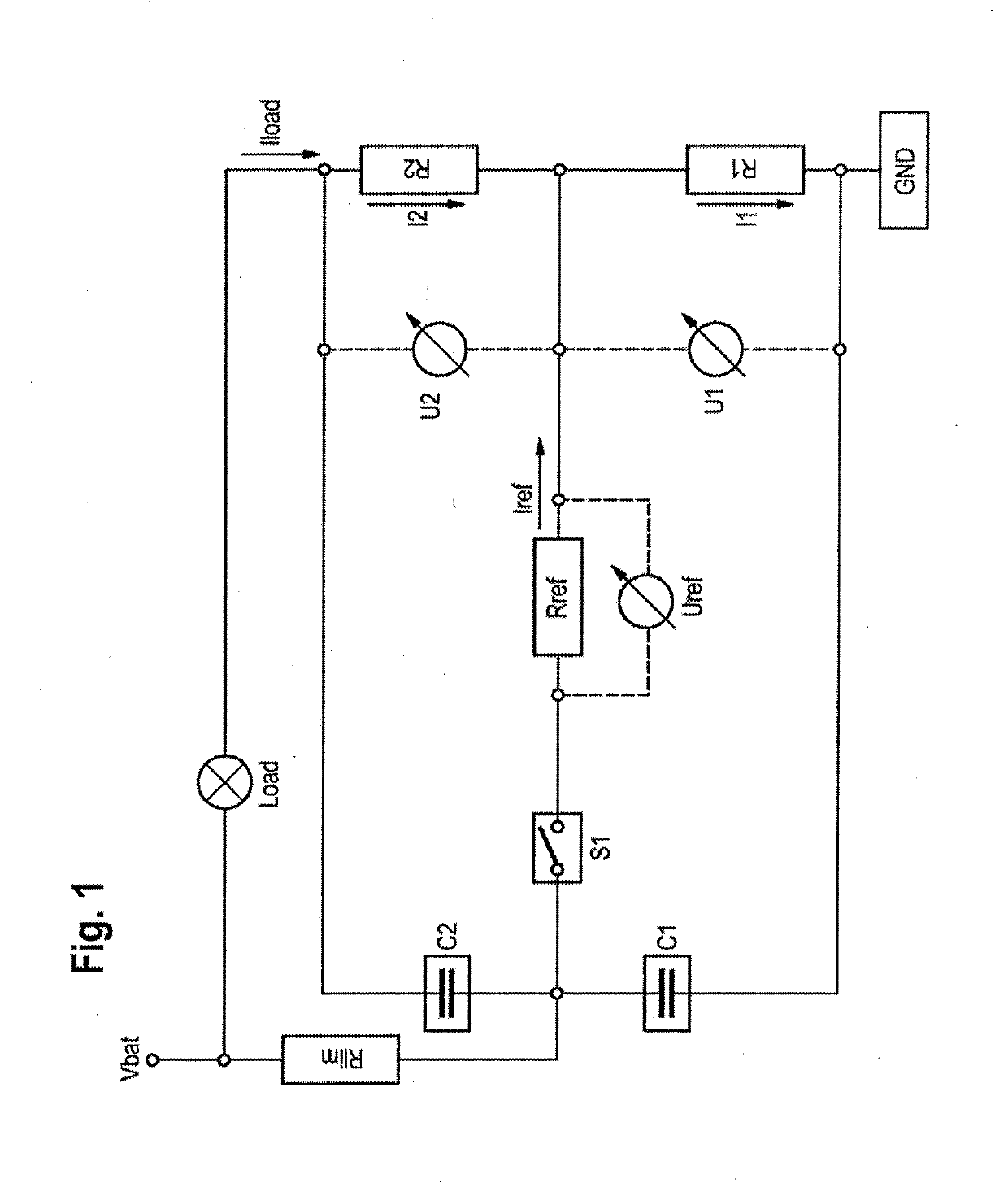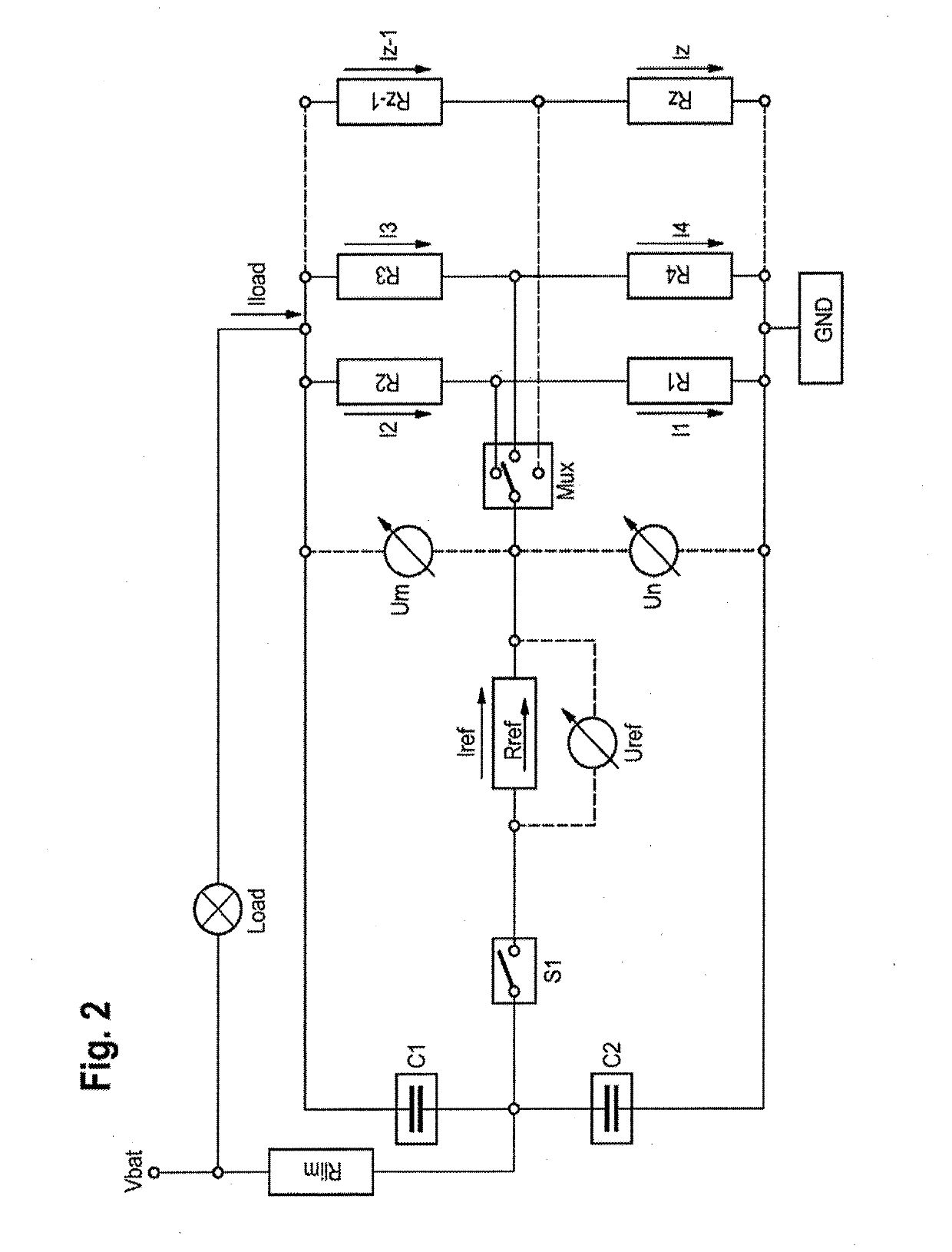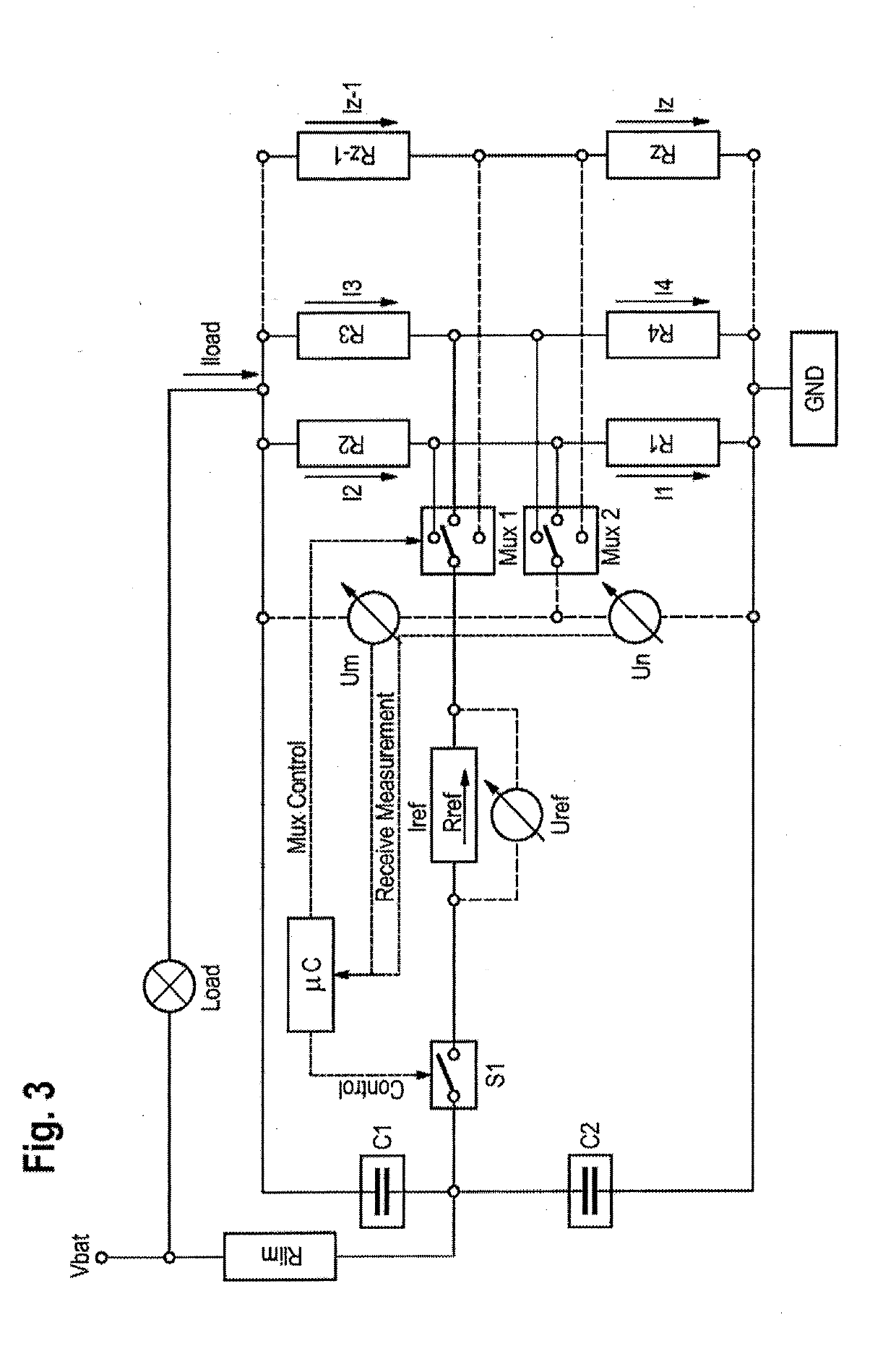Method for determining a load current and battery sensor
a load current and battery technology, applied in the field of method for determining a load current and battery sensor, can solve the problems of high and temporally greatly variable currents, continuous recalibration even while, high cost, etc., and achieve high resistance, high cost-effectiveness, and high accuracy of current measurement.
- Summary
- Abstract
- Description
- Claims
- Application Information
AI Technical Summary
Benefits of technology
Problems solved by technology
Method used
Image
Examples
Embodiment Construction
[0094]FIG. 1 shows a group of measuring resistors with connection according to a first exemplary embodiment which can also be advantageously used to carry out the method according to an aspect of the invention.
[0095]The group of measuring resistors has a first measuring resistor R1 and a second measuring resistor R2, via which a temporally variable load current Iload is conducted. This load current Iload initially comes from a battery which is depicted, in terms of voltage, as Vbat in FIG. 1. The load current Iload also flows via a load which is generally referred to as Load and is only schematically illustrated here and may comprise typical electrical components of a motor vehicle, for example a starter motor, a vehicle light or electronic components as well as a generator.
[0096]A first voltmeter U1 is arranged across the first measuring resistor R1. A second voltmeter U2 is arranged across the second measuring resistor R2. These are designed to measure respective voltages across t...
PUM
 Login to View More
Login to View More Abstract
Description
Claims
Application Information
 Login to View More
Login to View More - R&D
- Intellectual Property
- Life Sciences
- Materials
- Tech Scout
- Unparalleled Data Quality
- Higher Quality Content
- 60% Fewer Hallucinations
Browse by: Latest US Patents, China's latest patents, Technical Efficacy Thesaurus, Application Domain, Technology Topic, Popular Technical Reports.
© 2025 PatSnap. All rights reserved.Legal|Privacy policy|Modern Slavery Act Transparency Statement|Sitemap|About US| Contact US: help@patsnap.com



